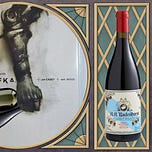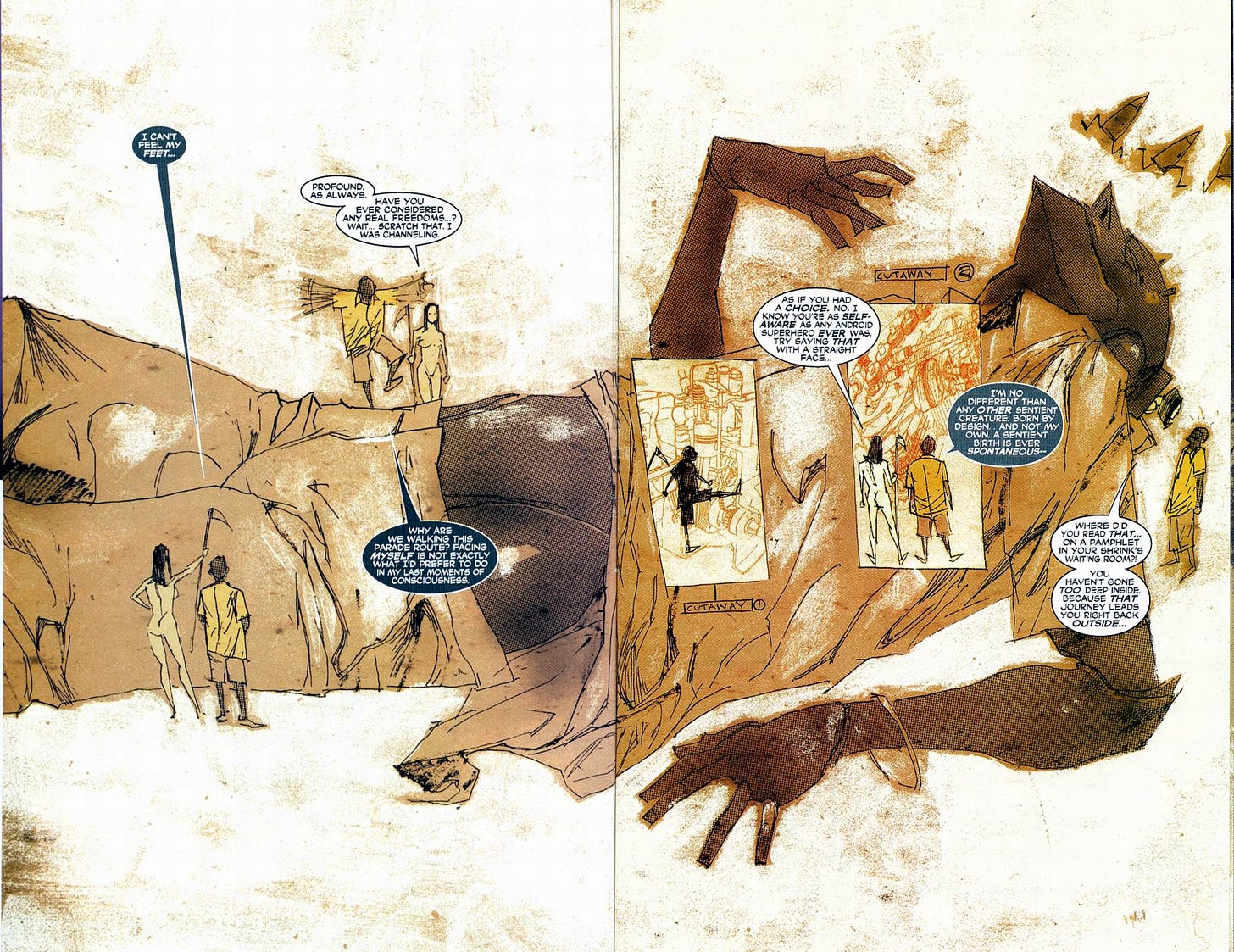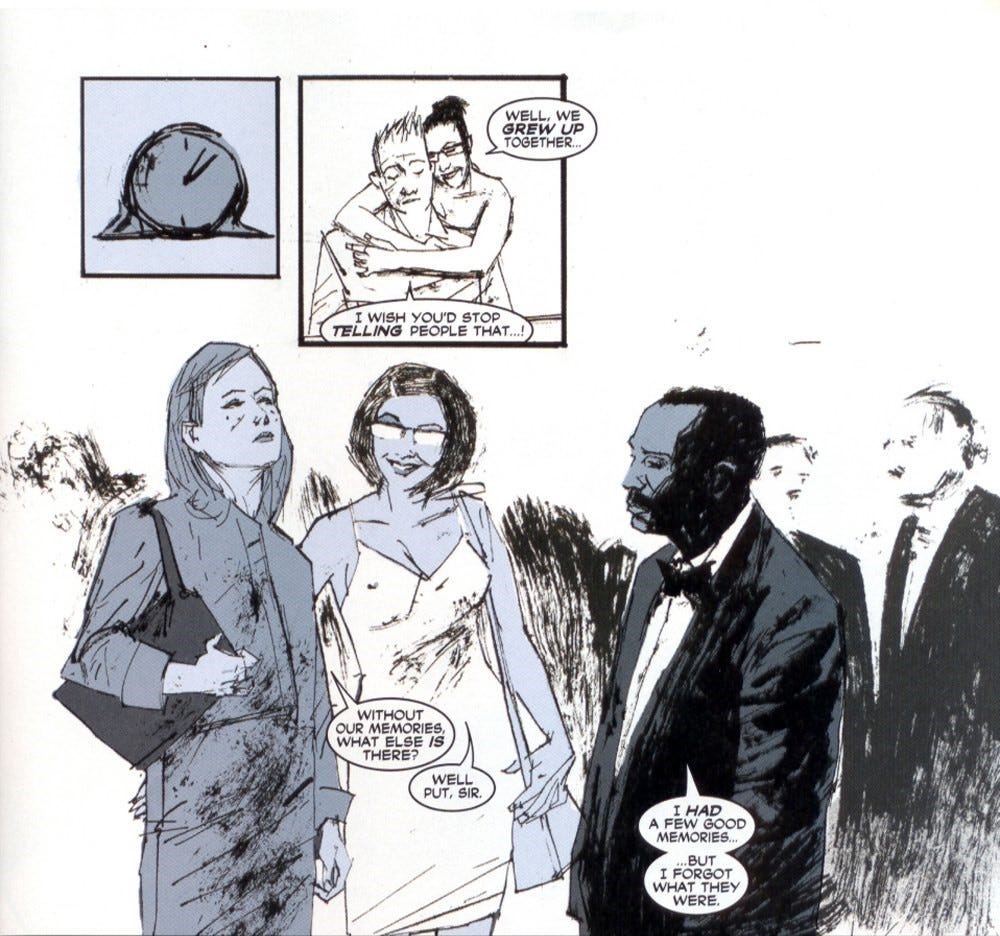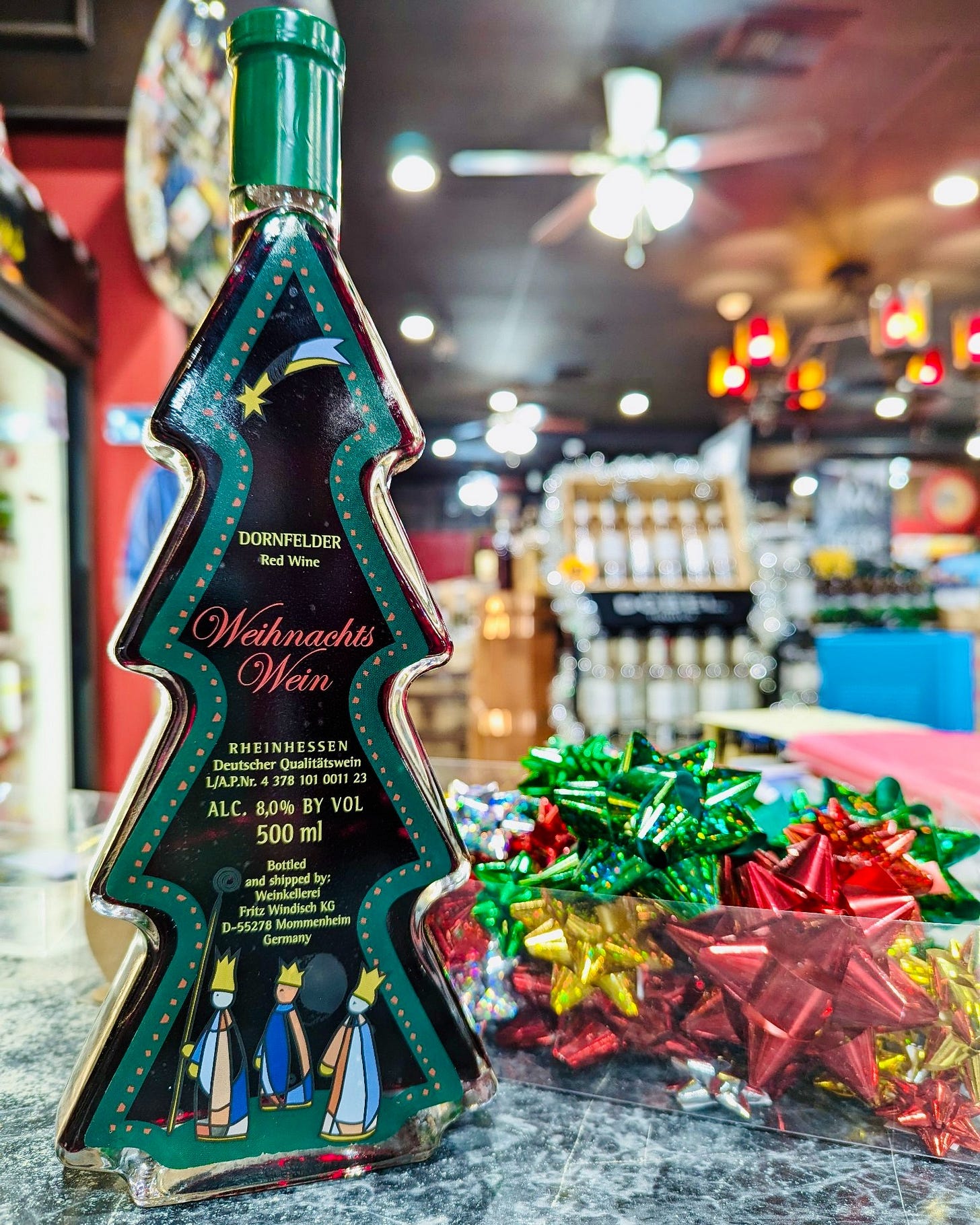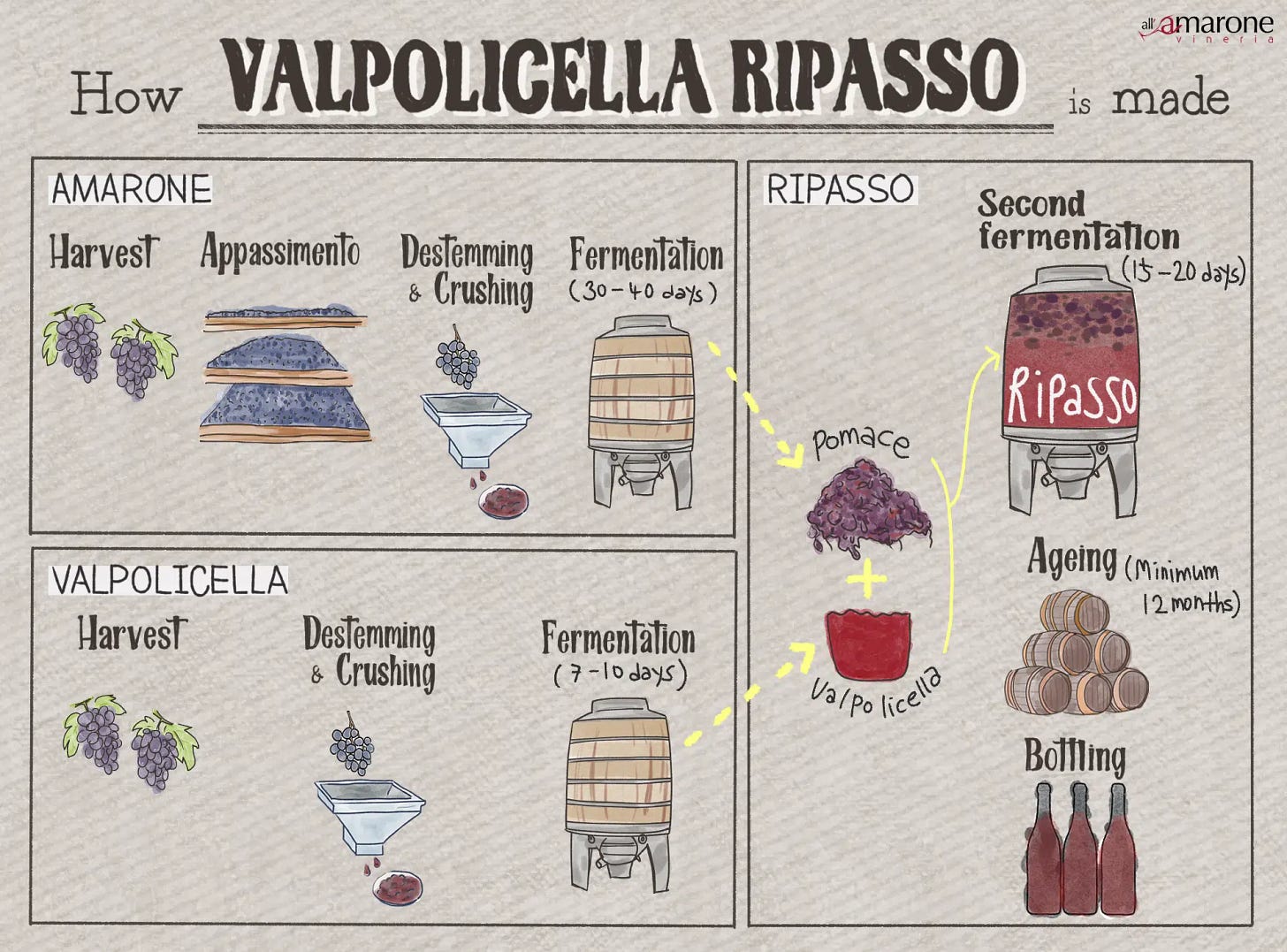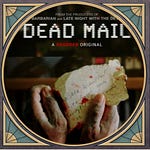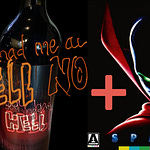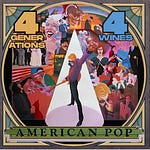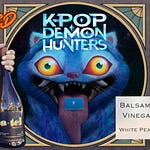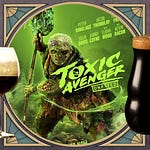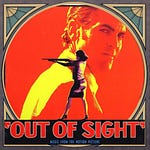Podcasting and independent writing ain’t easy, folks. If you love what we do here, become a subscriber! Just being part of our community means the world to us, and helps this Substack gain traction.
And if you can consider becoming a paid subscriber, that helps to keep the wine and entertainment flowing around these parts. And for only $2/month!
You can also listed to this podcast on your preferred platform. Apple, Spotify, Amazon, YouTube, you name it.
Today we tackle a forgotten comic from the early aughts, by fellow Substacker,
and Aussie artist extraordinaire, Ashley Wood.One of the $trange$t comics ever published by Wildstorm Productions, AUTOMATIC KAFKA ran a mere 9 issues between 2002-2003 but is nevertheless a series well worth revisiting in 2025.
But FIRST! It’s time for…
WINE TRIVIA QUESTION OF THE WEEK
We learned in last week's episode about the "Piquette" style of wine - which is a second pressing of the grape skins, using this to make a second wine after they'd already been soaked to make a first wine. (Like using a tea bag to make a second cup of tea beyond the first.)
The Italians have a different name for this process of second pressing of the grape skins, something other than “Piquette”. The process and term is used in one of their world-famous styles of wines from the Valpolicella region.
History of Automatic Kafka
We cover the history of the book briefly in the podcast - where the idea stemmed from and then the historical context of what the comics industry was facing when it dropped.
But you can go much deeper by reading the origins in writer Joe Casey’s own words!
Ahead of It’s Time, With a Foot in the Past
The series is a “mature readers”, cynical-eyed capitalist view of superheroes, pre-dating THE BOYS (though only a touch). In many ways, the comic lands harder now, post-social media and the disinformation age, than it did in 2002.
Here’s a quick 1 minute clip of us breaking that down for you:
The Best Question the Comic Asks
AUTOMATIC KAFKA carries a strong message about creators and their creations, and IS it a good thing for the creation to continue beyodn the original creator? Like, ever?
The comic explores this in what might be its best issue, and one of the best comics its creators have ever made (and that’s not a low bar!), Issue #4 which features…well, we won’t spoil it for you. Though note we WILL spoil it for you in the podcast!
Jow Casey wrote at length about this special issue here:
Dallas and myself had slightly differing but nuanced takes on this question, which you can listen to in this clip here sans spoilers:
This was the page that clued me in to what this issue was doing. Does it clue you in to the same?
The Wines
Dallas chose to poair the comic with a vintage (2017) red blend, something that had tension between the grapes blended together (much like the tension between the comic’s many themes and characters), that needed time to fully blossom (much like the comic itself did.)
He chose a outh African Red blend fromt he Swartland, a Rhone-style “GSM” blend (as they’re often referred to outside of the Rhone.) Shiraz aka Syrah, Grenache, Cinsault, and Tinto Borroca - a Portuguese grape that can also be found in South Africa and Australia in small quantities. It was mistaken for Shiraz in Portugal until DNA testing finally set the record right, and Tinta Borocca was “discovered”!
A.A. Badenhorst Family 2017 Red
Dave (moi) thought it best to find a wine normally associated with immature or unrefined palates (like superheroes are!) but the adultified, mature version of the wine.
In broader strokes, you can look for a “Trocken” Riesling or a Dry Gewurtztraminer. I talk about this at length in the episode, but these are two wines aften thought to be “sweet” by those who aren’t super into wine. And that’s because when you buy the cheaper stuff, it’s often off dry or semi-swee for the specific purpose of covering up how inferior the juice itself is. But find a “Trocken” or “Dry” version, and discover why wine nerds LOVE these two wines. You’ll probably have to spend $20+ for the bottle, but they are very much out there.
But specifically, I chose a RED wine, but one that, to my knowledge, only one winery makes in terms of an “adultified” version
And that wine, my friends, is DORNFELDER.
Dornfelder is a very dark, thick-skinned grape from Germany that has no problem getting ripe and sweet in the cold climate there. Traditionally, since they overgrow the grape and rarely care for quality (just quantity) the grape is used to make semi-sweet, low-alcohol, holiday wines a la Manischewitz.
But Pali Wines out of Santa Barbara, California grew a high quality Dornfelder, pretty much the only vineyard outside of Germany that I’m aware of. And they have been making this wine for over a decade now.
I drank their previous 2019 vintage (pictured in the marquee banner to this post), which was part of their “Tower 15” sub-label which focused on rare varieties. Now they’ve brought it under their flagship Pali Wines Estate brand, and the 2023 is ready for purchase.
This wine is DARK, like, it’s the closest thing to a BLACK wine I’ve ever seen.
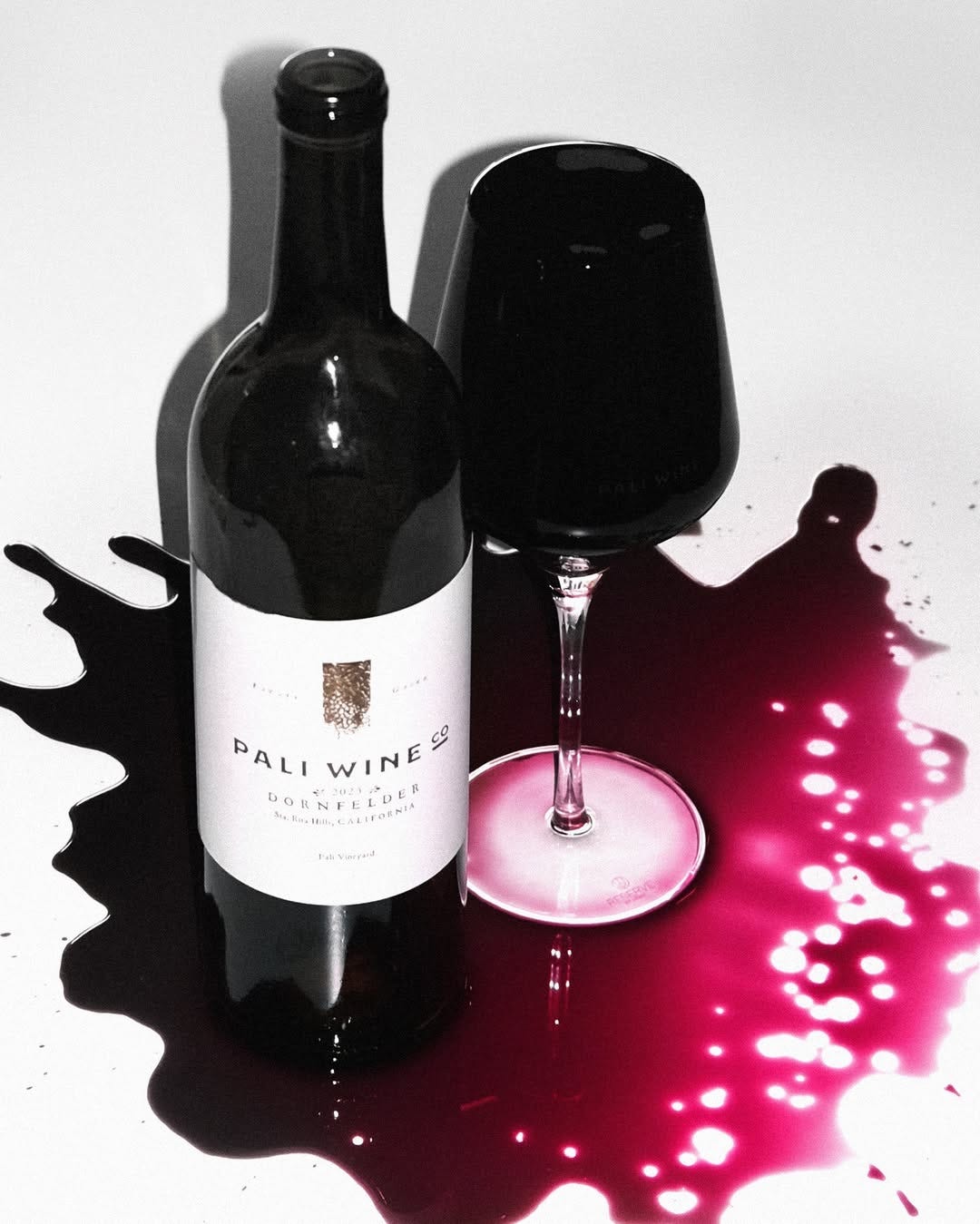
Black and red fruit, solid acidity, very soft tannins, completely dry (no literal sugar sweetness), this is the adultified Dornfelder the world needs, much as AUTOMATIC KAFKA was and still is the adultified superhero team the world needs to read and realize that superheroes or saviors or celebrities are garbage. They’re entertainment. They’re iconic. But little else.
Pali Estate Dornfelder 2023, Santa Barbara, California
Answer to this week’s Wine Trivia Question
A) Recioto
B) Appassimento
C) Ripasso
D) Metodo Segundo
“Recioto” is a term used for the sweet dessert wine style in Valpolicella. The term is a derivation of “recia” which means “ear”, and refers to the top part of a grape cluster that forms an “ear” shape and is exposed to the most sun, and so ripens/sweetens the most.
“Appassimento” is the process of partially dehydrating (or “raisining”) the grapes, to concentrate flavors and sugars, but is usually used to make ultimately dry wines without sugar, such as the Amarone della Valpolicella wines which are big and bold and age-worthy.
“Ripasso” means “Second Pass” (or “Re-Pass") and is the correct answer! It’s when they take the skins of the “Appassimento” grapes that were already used to make Amarone della Valpolicella, and re-use them once again to make a lighter but still extra flavorful wine called “Valpolicella Ripasso”. And now you know!
“Metodo Segundo” is an entirely made up term. Though “Metodo” is Italian for “Method” and “Segundo” is Spanish or Portugese for “Second”.


